This article was medically reviewed by Erik Kramer, DO, MPH. Dr. Erik Kramer is a Board-Certified Primary Care Physician at the University of Colorado. With over 15 years of experience, his clinical interests include obesity and weight management, diabetes care, and preventive care, as well as embracing a holistic approach to primary care. He received his Doctorate in Osteopathic Medicine (D.O.) from the Touro University Nevada College of Osteopathic Medicine and completed his residency at Central Maine Medical Center. Dr. Kramer is a Diplomate of the American Board of Obesity Medicine.
There are 14 references cited in this article, which can be found at the bottom of the page.
This article has been viewed 57,489 times.
Constipation can be one of the most uncomfortable and awkward conditions to experience. Nearly everyone experiences constipation from time to time. There are a number of ways you can use safe, gentle and natural remedies to relieve the pain and discomfort of constipation as well as prevent constipation.
Steps
Relieving Discomfort When Constipated
-
1Refrain from restricting your abdomen. When you are constipated, tight clothing around your abdomen can cause pain. Wear loose clothing that doesn’t put extra pressure on your abdomen.
- Tight pants or skirts may cause digestive problems because it constricts the belly area.
-
2Make a honey laxative. One natural remedy that has a reputation for immediate relief is honey and water. The high sugar level can act as an osmotic laxative, meaning that the sugar quickly moves water into your bowels. [1]
- Mix two tablespoons of honey with eight to 10 ounces of hot water. Drink it all as quickly as you can. Some people report that this method works very quickly.
- You can use the same approach with blackstrap molasses instead of honey.
Advertisement -
3Try olive oil. Olive oil can help with your bowel movements. Take one tablespoon of olive oil and follow it with one six to eight ounce cup of water. Mix the juice of one fresh lemon into the water.[2]
- You can also substitute one tablespoon of flaxseed oil in place of the olive oil.
- Mineral oil taken orally can work as well, but should never be used for long periods because it slows down the absorption of various vitamins and nutrients.
-
4Use glycerin suppositories. Glycerin suppositories can work very quickly to help you have a bowel movement. The glycerin lubricates the rectal walls and allows for easier bowel release. Since glycerin is administered by inserting the suppository in the rectum, there are relatively fewer adverse effects.[3]
- Use glycerin suppositories only occasionally, when needed. Follow manufacturer’s instructions and be aware that glycerin suppositories can work within a short period of time.
-
5Try herbs. Some herbs can help with relieving constipation because they act as purgatives. These herbs include senna, buckthorn, cascara, and aloe. Only use these for acute or rare constipation, and only under the direction of a physician such as a naturopath or a medical herbalist.
- Milder herbs act as bulking agents or as mild stimulants. These include flaxseed, senna, psyllium and fenugreek.
- There are many commercial herbal teas available. Find the one that you like the best. Don’t forget, you can always add a bit of lemon or honey if that helps it taste better for you. Examples of these teas include Traditional Medicinals Smooth Move Tea and Yogi Get Regular Tea.
- You can also take senna in a tablet or capsule form. Senna can gently and effectively relieve the pain and discomfort of constipation. Senna is FDA approved for constipation and usually works within eight to 12 hours. Don’t use senna if you have Crohn’s disease or ulcerative colitis and follow manufacturer’s directions for use.[4]
- You can also try psyllium. Try one tablespoon of psyllium seeds two times a day along with at least two full eight ounce glasses of water. Start out by taking one tablespoon of seeds. If there is no bowel movement within eight to 12 hours, take another tablespoon along with water. If you have asthma or are allergic to psyllium, don’t use this method.4
Relieving Constipation Through Diet
-
1Increase the fiber in your diet. Try to get about 25 to 30 grams of fiber per day. Fiber is essential for healthy and regular bowel movements. Increasing the fiber in your diet can help prevent constipation and help relieve it when you have it. Foods that contain fiber include:[5]
- Fruits and berries. If the fruit has edible skin, like apples, plums, and grapes, make sure you eat those because that is where most of the fiber is.
- Vegetables. Dark, leafy green vegetables like collard, mustard, and beet greens as well as Swiss chard are very high in fiber. Other vegetables like broccoli, spinach, carrots, cauliflower, brussel sprouts, artichokes, and green beans are high in fiber, too.
- Beans and legumes. This group includes lentils, kidney, navy, garbanzo, pinto, lima and white beans. Black eyed peas are a high fiber food you can also add. Beans and legumes can cause intestinal gas in some people. If this happens to you, you may want to avoid this source of fiber while you are constipated. Beans and legumes may be best used to prevent any constipation.
- Whole grains. Whole grains are unprocessed grains, which excludes white grains. Cereals like granola tend to have the highest fiber, but if you are buying boxed cereals, read the label to make sure your choice is high in fiber.
- Seeds and nuts, such as pumpkin, sesame, and sunflower seeds and almonds, walnuts, and pecans.
- If you can’t get enough fiber in your diet, consider taking a fiber supplement, like metamucil psyllium seed, or a bulk-forming laxative, like Citrucel, FiberCon, and Benefiber.[6]
-
2Eat prunes. Try eating prunes and drinking prune juice. Prunes promote regular bowel movements. Prunes are especially high in fiber and contain sorbitol, a stool-loosening sugar that naturally helps relieve constipation. Sorbitol is a mild colonic stimulant that helps reduce the transit time of stool and decreases the risk of constipation.[7]
- If you don't like the wrinkly texture or unique taste of prunes, prune juice may be a better alternative. The juice should start working within a few hours, so it’s important to let one glass pass through your intestines before attempting to drink another, or you may risk diarrhea.
- Prunes have 14.7 grams of sorbitol per 100 grams, whereas prune juice has 6.1 grams per 100 gram. You will have to drink roughly twice as much prune juice to achieve the same results.
-
3Eat probiotics, which might help with constipation. Probiotics are live bacterial cultures that create a healthy environment in your digestive system. While there isn’t strong scientific evidence that probiotics help with constipation, there’s no risk in trying.[8]
- Try adding a cup of yogurt to your daily diet. Check the label to make sure the yogurt you buy has active cultures of live bacteria.
- Include fermented and cultured foods such as kombucha, kimchi, and sauerkraut. These foods also contain beneficial bacteria that may aid in digestion and relieve constipation.
- Drink plenty of water. Hard, dry stools are a common cause of constipation. The more water you add, the easier it will be to pass the stool. Experts don’t have a solid rule about how much water a day a person needs to drink. The most common recommendation is to drink about eight eight-ounce glasses of water every day.[9]
- When you are constipated, increase to ten eight-ounce glasses of water every day. Use that as a starting point and find what works best for you.
Making Lifestyle Changes To Help Constipation
-
1Take a walk. So many people work at the computer or a desk, and many people don't get enough physical activity. When you have constipation, take a break every hour or so and take a walk. You don't just have to walk, you can do any exercise to help get your bowels moving.[10]
- Start out walking slowly and then pick up the pace until you are walking at about top speed without actually running. Do the fast walk for about five minutes, and then slow down for another five minutes. The total time walking should be about 10 minutes every hour or so.
- If that amount of time doesn’t work for you because of other responsibilities, just try to increase the amount of faster-than-normal walking time you do. However, don’t start with the fast walking. Start out slowly for about 30 seconds and speed up every ten steps. It can be a bit uncomfortable, but don’t let that discourage you.
-
2Put aside enough time for a bowel movement. So many people rush and don’t take enough time for a bathroom break. Make sure you have enough time to relax and try to let your bowels do most of the work. Bring a book or a magazine. Try to arrange a time when you won’t be interrupted.[11]
- If possible, you should try to get on a schedule. Try to go to the bathroom at the same time every day to get your system regular.
-
3Change the way you sit. You may also try changing the way you sit on the toilet. When you are on the toilet, use a stool or the edge of the tub to prop your feet up. Bring your knees in as close to your chest as possible. This increases the pressure on your bowels and may ease the passage of a stool.[12]
- Try to relax as much as possible and let your bowels do most of the work.
-
4Do yoga. Certain yoga poses may help stimulate your bowel and get your body in a comfortable position to have a bowel movement. These positions can be helpful because they increase the internal pressure on your intestines and help the bowels move the stool more easily.[13]
- Baddha Konasana: In a seated position, bend your knees and bring your feet together so the soles are touching, and grasp your toes with your hands. Flutter your legs quickly, then lean forward so that your forehead touches the floor. Hold for five to 10 breaths.
- Pavanamuktasana: In a reclined position, stretch your legs out in front of you. Bring one knee up to your chest, and hold it there with your hands. Flex or wiggle your toes. Hold that position for five to 10 breaths, then repeat with the other leg.
- Uttanasana: From a standing position, keep your legs straight and bend at the waist. Touch the mat with your hands or grasp the back of your legs. Hold for five to 10 breaths.
Understanding Constipation
-
1Learn the causes of constipation. Constipation, or the difficult or uncomfortable passage of stools, occurs mainly because people very often don’t have enough fiber and water in their diet. Constipation can also be due to too little exercise or it can be a side effect of a number of different drugs.[14]
- It is important to realize that constipation can be a symptom of a number of more serious medical disorders. Home remedies can be useful for dealing with constipation due to diet, not enough water, or medication side effects. However, if you are dealing with constant or recurring constipation and home remedies don't help, make sure you see your healthcare professional about your problem.
-
2Understand there is no normal frequency of bowel movements. There is really no set rule or norm when it comes to bowel movements. The abnormal is when you have constipation or diarrhea. Most people feel most comfortable when they have at least one bowel movement every day, but there is a wide variation with this. Some people have two to three bowel movements a day, and other people have a bowel movement every other day, and this is normal for them.[15]
- In general, at least four to eight times a week seems to be most common. The key is your diet and comfort level.
- People with more frequent bowel movements tend to have high fiber diets and are often vegetarians or vegans. Those with fewer bowel movements tend to have a higher meat content in their diet and lower water intakes.
-
3See your physician. If none of these methods provide relief in two to three days, make an appointment with your healthcare professional. Long-term constipation can be a symptom of a more serious medical condition.[16]
- If you are pregnant or nursing, or are caring for an infant or child who is constipated, please talk to your healthcare professional before trying any of the methods described here.
- Talk to your healthcare professional before trying any of the methods described here if you are taking any medication or if you have a medical condition. Herbs and food can interact with a number of different medications and it is best to check first.
-
4Talk to your doctor if you have trouble relaxing your pelvic muscles. When you have pelvic floor dyssynergia, the muscles in your pelvic floor don’t relax to let out stool, which leads to constipation. If you have trouble knowing when you’re ready to have a bowel movement that’s another sign that you might have pelvic floor dyssynergia.[17]
- Doctors can help treat you with biofeedback, a behavioral technique that helps retrain your muscles to work better.[18]
Warnings
- Don’t overdo any of the remedies. You don’t want to exchange constipation for diarrhea.⧼thumbs_response⧽
- It can be hard to predict what method will work, how well it will work, and importantly, when it will work. Make sure that you have the time and availability to use the bathroom when you need to.⧼thumbs_response⧽
References
- ↑ http://www.activebeat.com/diet-nutrition/15-home-remedies-to-help-relieve-constipation/
- ↑ https://www.drugs.com/npp/olive-oil.html
- ↑ http://patient.info/health/constipation-in-adults-leaflet
- ↑ https://www.nlm.nih.gov/medlineplus/druginfo/natural/652.html
- ↑ https://www.nutrition.org.uk/healthy-sustainable-diets/starchy-foods-sugar-and-fibre/fibre/
- ↑ https://www.ucsfhealth.org/education/fiber-supplements
- ↑ http://patient.info/health/constipation-in-adults-leaflet
- ↑ http://www.health.harvard.edu/blog/probiotics-may-ease-constipation-201408217377
- ↑ http://www.nhs.uk/Conditions/Constipation/Pages/Treatment.aspx
- ↑ http://www.nhs.uk/Conditions/Constipation/Pages/Treatment.aspx
- ↑ http://www.nhs.uk/Conditions/Constipation/Pages/Treatment.aspx
- ↑ http://www.nhs.uk/Conditions/Constipation/Pages/Treatment.aspx
- ↑ https://www.ncbi.nlm.nih.gov/pmc/articles/PMC4438173/
- ↑ https://my.clevelandclinic.org/health/diseases/4059-constipation
- ↑ https://www.continence.org.au/bristol-stool-chart
- ↑ https://my.clevelandclinic.org/health/diseases/4059-constipation
- ↑ https://stanfordhealthcare.org/medical-conditions/digestion-and-metabolic-health/pelvic-floor-dyssynergia.html
- ↑ https://www.ncbi.nlm.nih.gov/pubmed/17368232
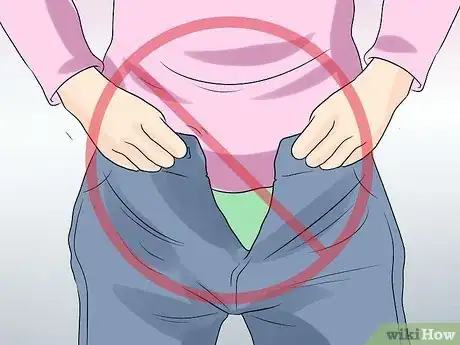
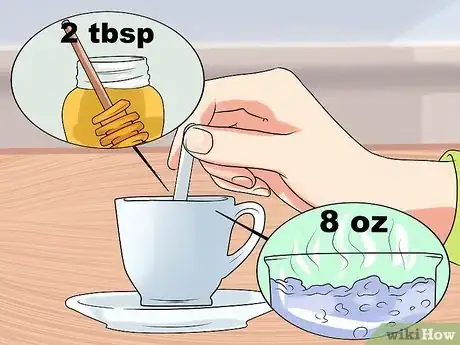




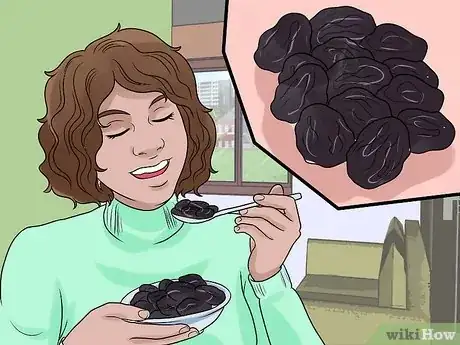

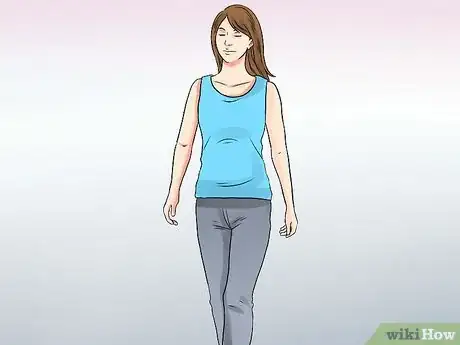
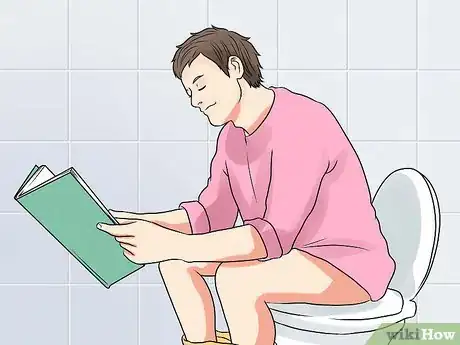
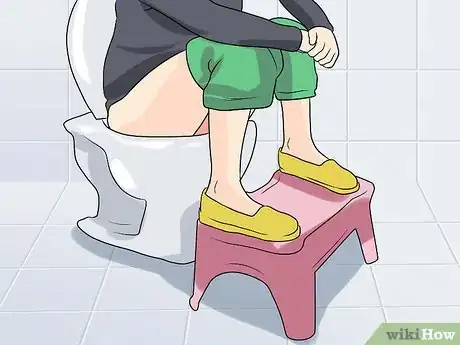
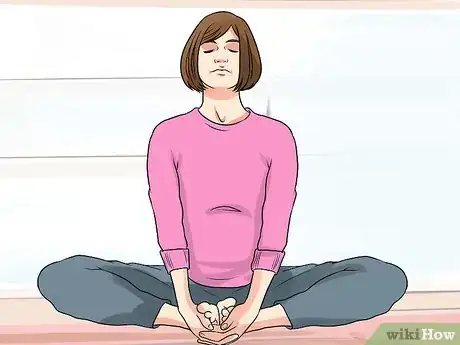

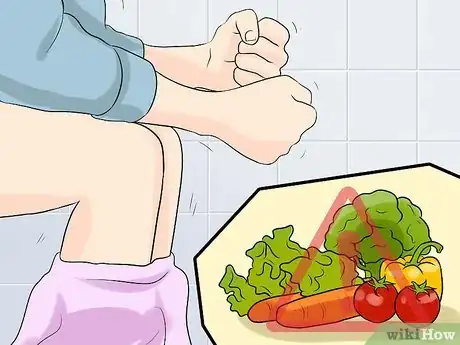






















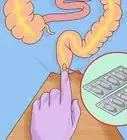




































Medical Disclaimer
The content of this article is not intended to be a substitute for professional medical advice, examination, diagnosis, or treatment. You should always contact your doctor or other qualified healthcare professional before starting, changing, or stopping any kind of health treatment.
Read More...